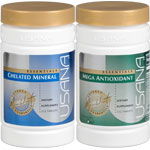Food and Health
 Through the study of herbal medicine, many preparations used for the prevention and treatment of health problems are already in our food. While nutrients are vital to our day-to-day functioning, phytochemicals are non-essential compounds found in plants and are responsible for a whole range of things from their color to providing plants with fuel. Transferred to us, they can essentially be viewed as drugs.
Through the study of herbal medicine, many preparations used for the prevention and treatment of health problems are already in our food. While nutrients are vital to our day-to-day functioning, phytochemicals are non-essential compounds found in plants and are responsible for a whole range of things from their color to providing plants with fuel. Transferred to us, they can essentially be viewed as drugs.
We are used to seeing headlines on the link between our health and the food we eat. But being specific and definitive about the effect is tricky (which is why we get bombarded with so many consuming messages). This is mostly because studying anyone’s eating habits relies on them telling the whole truth and nothing but the truth about every morsel they consume over a period of months, even years. As a result, many of the organizations which deal with the diseases these claims are directed at are cautious about reports claiming certain foods can prevent, in their cases, heart disease or arthritis. We are trying to separate fact from fiction by finding out more about possible links between diet and arthritis. Scientists are currently carrying out research into the possible preventative effects of garlic and broccoli on osteoarthritis. What we do know is that eating brightly colored fruits and vegetables like oranges, carrots and sweetcorn may help reduce the risk of developing inflammatory disorders like rheumatoid arthritis, while eating lots of red meat is a risk factor. Researchers have also recently found that women who eat lots of allium vegetables, such as garlic, onions and leeks, have lower levels of hip osteoarthritis.
Meanwhile more facts are rapidly being separated from fiction. The biological activities of certain plant compounds have long been exploited as pharmaceuticals, but there is a growing body of evidence that these activities may be at the root of the health benefits of diets rich in fruit and vegetables. Large studies continue to provide support that fruit and vegetables reduce the risk of cardiovascular disease. Recent findings have implicated certain phytochemicals as being of particular importance, such as the anthocyanins found in berries, and flavonoids found in apples and onions. New studies have provided less support for diets rich in fruit and vegetables reducing the risk of cancer, although evidence that cruciferous vegetables help, such as broccoli and cabbages, remain strong. Having three portions of cruciferous vegetables three times a week is likely to benefit your health but make sure you steam them, as boiling may break down the beneficial compounds.
Tips for dealing with some of the most fundamental aspects of our health.
Boosting Immunity
Shitake mushrooms contain a complex sugar, beta-glucan, which increases the production of white blood cells and makes them act more aggressively when they come into contact with invaders. Research suggests these compounds may be useful for treating auto-immune conditions. Goji berries contain similar complex sugars as well as a compound which regulates the activity of CD4 cells (cells which are part of our immune system).
Joint Health
Ginger is the king of anti-inflmmatories. It contains compounds called gingerols, which block inflammation. Celery is also good for painful joints because it contains a compound, 3-n-butylphthalide, which is a natural painkiller, as well as a group of compounds called coumarins, which calm inflammation.
Digestion
Jerusalem artichokes contain compounds called fructooligosaccharides, which feed good bacteria and encourage their proliferation within the digestive tract, which helps combat bloating. Fresh peppermint is also well known for breaking down gas.
Heart Health
Two really simple ingredients for heart health are garlic and chili. Garlic has a compound called ajoene, which regulates blood clotting, which chilli contains a compound, capsaicin, which is found on the inner skin and seeds and interacts with the walls of blood vessels to open them up. Allicin, in garlic, is also a known circulatory stimulant; anthocyanins, the red and purple pigments found in blueberries, grapes and red onions, are powerful anti-inflammatories. They are known to help protect the inner lining of the arteries, which may protect them from rupture leading to strokes and heart attacks.
The key is not to become militant about what you’re eating. Just try to get into the habit of incorporating these kinds of ingredients into your daily diet – particularly if you have a particular condition which would benefit from eating food containing certain compounds. Food is more than just fuel and serves up far more than nutrients alone.
Organic: Some organic vegetables have higher levels of antioxidants because when plants aren’t sprayed with pesticides, they develop their own protection and have antioxidant effects in our body.
Five a day: It should be more like 20 a day. We are under increasing physical, emotional and environmental stress, which changes our nutritional requirements – bio-chemical pathways are amplified and higher levels of nutrients are needed to deal with those processes.
Your diet: go through bags of things like spring greens and kale, plus squash, broccoli and mushrooms – and eat fish at least once a day. If you’re craving savory food you’re likely to be lacking in certain minerals, and if you’re craving salty things it may mean your electrolytes are down.
Supplements: Taking good quality multi-vitamins and some omega-3 is a good idea. Take a multi-phytonutrient supplement and a very high dose of omega-3 (ideal omega). Sometimes add supplements to food for a super boost.
 top-rated Total Body Health products manufactured by USANA Health Sciences which provides a comprehensive range of USANA vitamins, minerals, and antioxidants.
top-rated Total Body Health products manufactured by USANA Health Sciences which provides a comprehensive range of USANA vitamins, minerals, and antioxidants.

